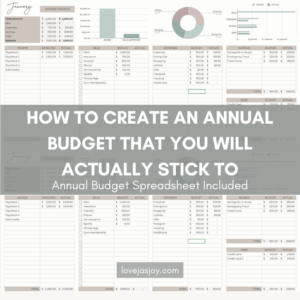How to Pay for College: Everything You Need to Know

Disclaimer
Please note that this blog post may contain affiliate links to products or services from third-party websites. The information provided in this blog post is based our own personal experiences, research, and opinions. By reading this blog post, you acknowledge and agree to the terms of this disclaimer. Read our full disclaimer page. If you have any concerns or questions, please feel free to contact us.
Here is everything you need to know about how to pay for college. College is just around the corner. Whether you are an incoming freshman, transfer student, or a returning student, this blog post will help you immensely. With the experience and education that college brings, comes the cost of tuition, textbooks, and other expenses that can be prohibitively high. So ridiculously high, you are left wondering “HOW THE HECK AM I GOING TO PAY FOR COLLEGE?!”
If you are stressing, weary and anxious of the costs, this post will help lift some weight off your shoulders.
In this blog post, we’ll discuss everything you need to know about how to pay for college. We will provide tips and information about saving money, minimizing debt, scholarships, grants, and more! So keep reading.
Here it is! HOW TO PAY FOR COLLEGE: EVERYTHING YOU NEED TO KNOW
Table of Contents
In all your ways submit to Him, and He will make your paths straight. Honor the Lord with your wealth, with the firstfruits of all your crops; then your barns will be filled to overflowing, and your vats will brim over with new wine
Proverbs 3:6, 9-10 Tweet
SCHOLARSHIPS & GRANTS
To start, two forms of financial aid that assists in paying for college are scholarships and grants. They are considered FREE MONEY (yes! you don’t have to pay it back!), but there is a difference between the two.
Scholarships are typically awarded to students based on their GPA or athletic abilities.
Grants are awarded based on their financial need.
Numerous scholarship and grant programs are available to college students. One example, the Federal Pell Grant, can grant eligible students up to $6,495 per year depending on the student’s estimated family contribution (EFC). The Coca-Cola Scholars Program and the Gates Millennium Scholars Program are examples of merit-based scholarship programs.
It can be difficult and daunting to search and apply for scholarships and grants, but here are some tips to help you throughout the process.
- Start early and be organized. Make a list of every scholarship and grant you would like to apply for. Be sure to keep track of their deadlines. Many could be due several months or even a year before the start of the academic year.
- Structure your application to the specific scholarship or grant you are applying for. There are similarities (e.g. essay, letter of recommendation, references), but overall, every application requires something different. Therefore, read the instructions carefully and make sure you meet all the requirements.
- Don’t be afraid to ask for help. Reach out to your school’s financial aid office or other resources such as community organizations for guidance.
With these tips in mind, you can increase your chances of securing financial aid to help pay for your college education.
11 Financial Tips You Need to Know for College
FEDERAL AID
Federal aid programs help students pay for their college education as well. It provides financial assistance in the form of loans, grants, scholarships, and work-study programs.
Often, federal loans can be low-interest and deferred until after graduation. This means you still have to pay for the loans, but not until after you graduate with a degree. The interest rate of federal loans typically remains constant throughout your time in college, so pay off as much of the interest you can that accrues monthly. It is ideal to pay above the accrued interest, so you won’t be deep into debt.
Grants and scholarships have already been discussed above, and later on the post we will discuss work-study programs.
In order to receive federal aid, you will need to fill out the Free Application for Federal Student Aid (FAFSA). It takes into account students’ financial standing and determines eligibility for various federal programs. Unfortunately, unless you meet certain criteria to be considered “independent”, eligibility will be based on Estimated Family Contribution (EFC), even if your family does not plan on paying for your college costs.
The pros of federal aid include:
- ability to access funds that may not be available otherwise, especially for low-income students
- flexibility in repayment options for loans
- potential to qualify for grants that do not need to be repaid
The cons of federal aid include:
- debt burden that can accumulate with loans
- possibility of not qualifying for aid or receiving less than desired
Overall, federal aid programs are valuable to students who are in need of financial assistance (which is all of us) to pursue a higher education. Understanding and knowing the different types of aid and how you can take advantage of them, can allow you to make informed decisions; efficiently fund your college experience.
PRIVATE LOANS
An additional financial assistance that students can utilize are private loans. Unlike federal loans, private loans are offered by banks, credit unions, and other financial institutions. Private loans typically have higher interest rates than federal loans, but they do have more flexible repayment options.
A huge advantage is that private loans can be used for the entire cost of attendance, not just your tuition like federal aid. It can be used for your tuition, fees, room and board, books etc. Private loans also offer a range of repayment options, such as fixed or variable interest rates, and the ability to defer payments while in school. Although, personally, I would not recommend variable interest rates. Since COVID, the interest rate has been increasing.
However, there are also some disadvantages to private loans.
- A co-signer with good credit may be required to be approved for the private loan.
- The biggest and most concerning disadvantage about a private loan is: They do not offer the same benefits as federal loans, such as loan forgiveness programs and income-driven repayment plans.
To find the best private loan options, students should start by researching different lenders and comparing their interest rates, fees, and repayment options. It is recommended to speak with a financial aid advisor at their school for guidance on choosing the right loan for their needs. Also, it is important for students to carefully read the terms and conditions of any loan agreement before signing, to ensure that they understand the full cost of borrowing.
from Jas Joy:
“Personally having a private loan, my experience has not been beneficial financially. My variable interest rate has increased substantially over the years, AND I am in deeper debt from requesting a bigger loan amount to cover my entire cost of attendance. In addition, a co-signer was required, resulting in affecting my co-signer’s income to debt ratio as well.”
WORK STUDY PROGRAMS
Work-study programs are a well-liked option for college students who wish to earn extra money while studying by giving them part-time jobs related to their field of study. This can provide valuable experience and pay for college expenses. These programs are funded by the government and run by colleges and universities.
To apply, students should visit their financial aid office for information about available jobs, requirements, and deadlines, and consider their interests and skills when selecting positions. Although work-study jobs offer valuable work experience and flexibility in scheduling, they typically pay less than traditional jobs and may not cover all expenses, and hours may be limited.
ALTERNATIVE WAYS TO PAY FOR COLLEGE
There are alternative payment methods that college students can consider. These include crowdfunding and employer tuition assistance programs.
Crowdfunding is a popular option where students can create a campaign on platforms such as GoFundMe or Kickstarter to raise funds for their college expenses.
On the other hand, employer tuition assistance programs can provide financial support for tuition, fees, and other expenses related to college in exchange for the commitment to work for the employer. Employers may offer tuition reimbursement, scholarships, discounts and/or offer to pay for the entirety of a student’s degree.
However, there are pros and cons to these alternative payment methods.
- Crowdfunding can be time-consuming and may not always be successful
- Employer tuition assistance programs may require a commitment to work for a specific employer for a certain amount of time.
- Moreover, if one were to take advantage of employer tuition assistance and end up separating, the employer may require paying back the funds given.
Therefore, it is important for students to weigh the advantages and disadvantages of these options before deciding which one is best for them.
TIPS FOR SAVING MONEY ON COLLEGE COSTS
To reduce college expenses and minimize their debt, students can employ several strategies.
- Carefully research and compare the cost of attending different colleges and universities.
- Take advantage of community college or online courses for general education requirements, which are more affordable than courses at four-year universities
It is great to be able to experience college life, but it is also incredibly costly.
- Living frugally and budgeting carefully can help students save money on college expenses. They can cook at home, use public transportation, and look for free or low-cost entertainment options.
- Students should apply for scholarships and grants early and often to help cover tuition and other expenses.
- Working part-time or taking on a work-study position can provide additional income to reduce the need for loans.
- Students can also consider subsidized federal loans that don’t accrue interest while they’re in school. It’s important for students to borrow only what they need and to carefully consider the long-term impact of taking on debt before accepting any loans.
By implementing these strategies, students can minimize their college expenses and reduce their debt load.
IN CONCLUSION
Financing a college education can seem overwhelming, but there are numerous avenues to assist students and families with managing expenses. Scholarships, grants, federal aid, private loans, work-study programs, and alternative payment methods all provide unique solutions to pay for college. By investigating these various options and implementing strategies to decrease costs and limit debt, students can attain their academic aspirations without incurring excessive expenses. We advise readers to begin exploring their college payment choices now, as early preparation is key to achieving financial success.
WEBSITES THAT WILL HELP YOU
- Fastweb.com: Free scholarship search engine that connects students to scholarships and financial aid tools. Their goal is to help make school more affordable.
- Scholarships.com: Get matched to scholarship applications, tailored to your information. Organize your scholarships and apply!
- Big Future College Board: Provides many sources and tools to help you plan for college, pay for college, explore careers and more
- The U.S. Department of Education’s Federal Student Aid website– Federal aid programs, including grants, loans, and work-study programs. It is a reliable source for information about how to pay for college.
- FinAid.org: This website provides information on scholarships, grants, loans, and other types of financial aid, as well as tools to help students calculate college costs and estimate their financial aid eligibility.
- NerdWallet: Variety of resources related to paying for college, including advice on how to compare and choose student loans, as well as information about scholarships and grants.
- Student Loan Hero: Student loans, including private loans, federal loans, and loan repayment options.
- The Consumer Financial Protection Bureau: This government agency provides resources and advice for students and families about how to pay for college and manage student loan debt.
- Cappex.com: Scholarships, as well as tools to help students find colleges and compare financial aid offers.
- GoFundMe.com: Popular crowdfunding platform that students can use to raise funds for college expenses.
- ScholarshipAmerica.org: Scholarships, grants, and other financial aid options, as well as resources to help students and families navigate the financial aid process.
- SallieMae.com: Private student loans, as well as resources to help students and families understand the loan application process and manage student loan debt.
- Edvisors.com: Scholarships, grants, federal and private student loans, as well as other types of financial aid.
- To find information on employers tuition assistance, visit your employer’s human resources website or speak with your manager about availability. Here are a few amazing employers that provides employer’s tuition assistance:
- Starbucks: Fully paid for bachelor’s degree at ASU Online
- Chipotle: Pays 100% of tuition up front
- Discover: Partial tuition assistance
- 25+ Companies with College Tuition Assistance: Check out this blog for more information
Related Topics

A Payday Routine: How to Budget Your Paycheck Like a Financial Expert




How To Create An Annual Budget That You Can Actually Stick To!


